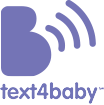Resources for New Moms
- Baby’s Development
- Tips & Resources
- Feeding Baby
- Health & Safety
- Well-Child Visits & Vaccines
- Well-Child Visit Guides
- Vaccines
- Finding Free Vaccines
- Making Shots Less Stressful
- Protect Baby from Pertussis (Whooping Cough)
- Vaccine Information for Babies
- Vaccines: DTaP
- Vaccines: MMRV
- Vaccines: Hepatitis A
- Vaccines: Hepatitis B
- Vaccines: Hib
- Vaccines: Rotavirus
- Vaccines: PCV
- Vaccines: Polio (IPV)
- Vaccines: Seasonal Flu
- Vaccines: Varicella
- Parenting
Sun Safety for Your Baby
Keeping your baby safe in the sun
- Seek shade. UV rays are strongest and most harmful during midday, so it’s best to plan indoor activities then. If this is not possible, seek shade under a tree, an umbrella, or a pop-up tent. Use these options to prevent sunburn, not to seek relief after it’s happened.
- Cover up. When possible, long-sleeved shirts and long pants and skirts can provide protection from UV rays. Clothes made from tightly woven fabric offer the best protection. A wet T-shirt offers much less UV protection than a dry one, and darker colors may offer more protection than lighter colors. Some clothing certified under international standards comes with information on its ultraviolet protection factor.
- Get a hat. Hats that shade the face, scalp, ears, and neck are easy to use and give great protection. Baseball caps are popular among kids, but they don’t protect their ears and neck. If your child chooses a cap, be sure to protect exposed areas with sunscreen.
- Wear sunglasses. They protect your child’s eyes from UV rays, which can lead to cataracts later in life. Look for sunglasses that wrap around and block as close to 100% of both UVA and UVB rays as possible.
- Apply sunscreen. If your baby is older than 6 months, use sunscreen with at least SPF 15 and UVA and UVB (broad spectrum) protection every time your child goes outside. For the best protection, apply sunscreen generously 30 minutes before going outdoors. Don’t forget to protect ears, noses, lips, and the tops of feet. Reapply every two hours and after swimming, sweating, or toweling off.
Babies under 6 months
Try to keep babies younger than 6 months out of direct sunlight. Find shade under a tree, umbrella, or a stroller. Sunscreen is not recommended for babies under 6 months old.
Babies over 6 months
You can apply sunscreen to all areas of the body, but be careful around the eyes. If your baby rubs sunscreen into her eyes, wipe her eyes and hands clean with a damp cloth. If a rash develops, talk with your child’s provider.
Sunscreen tips
- Use a sunscreen that says “broad-spectrum” on the label – that means it will screen out both UVB and UVA rays.
- Use a sunscreen with an SPF (sun protection factor) of at least 15. The higher the SPF, the more UVB protection the sunscreen has.
- For sensitive areas of the body, such as the nose, cheeks, tops of the ears, and the shoulders, choose a sunscreen or sunblock with zinc oxide or titanium dioxide.
How to apply sunscreen
- Use enough sunscreen to cover all skin, especially the face, nose, ears, feet, hands, and backs of the knees. Rub it in well.
- Apply sunscreen 30 minutes before going outdoors to give time for the sunscreen to set into the skin.
- Reapply sunscreen every 2 hours. Sunscreen wears off after swimming, sweating, or just from soaking into the skin.

